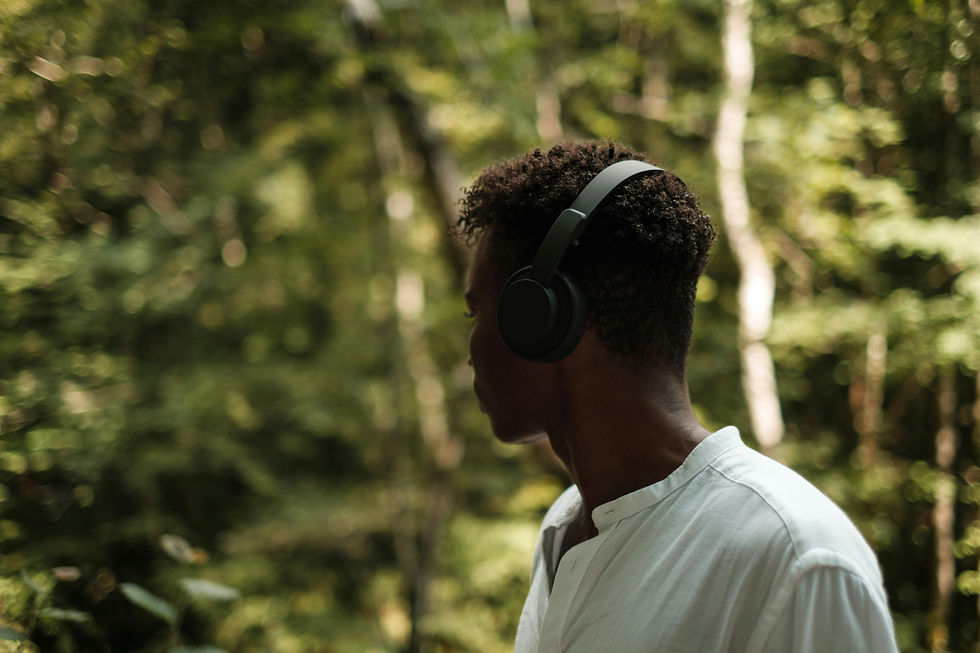Music Therapy for Creators [The Power of a Playlist]
- Tyler Scott
- May 2, 2022
- 3 min read

May is #MentalHealthAwarenessMonth. The life of a creator comes with its own unique set of trials and tribulations. From dealing with creative blockages to managing stress and anxieties, developing a self-care practice is more important than ever. Finding tools to help care for our mental health and well-being is crucial for maintaining a healthy and prosperous creative career. Imagine a world where our human struggles could be cured by something we all love: music. This utopia is not far off, as music therapy has become a growing practice for helping people address various issues from depression and anxiety to physical pain and more.
In a recent Project Immersed Panel, host Dave Sorbara and a panel of guests explored the exciting potentials of Digital Music Therapy. According to the American Music Therapy Association, Music therapy is defined as the "clinical & evidence-based use of music interventions to accomplish individualized goals within a therapeutic relationship by a credentialed professional who has completed an approved music therapy program." This type of therapy can be used to address a number of conditions including:
Promote Wellness
Manage Stress
Alleviate Pain
Express Feelings
Enhance Memory
Improve Communication
Promote Physical Rehabilitation
and more
Panelist Jennifer Buchanan is a Certified Music Therapist and Author. In the video below, she demonstrates the process of a traditional music therapy session.
Panelist Frank A. Russo, Ph.D., is a Cognitive Neuroscientist + Professor of Psychology at Ryerson University. He explains music's power through its ability to synchronize. As music creators, we employ this healing power daily. When we create music with others, we synchronize with the group, and this in turn creates a sense of wholeness that can have a healing effect. As Russo states in the video below,
"You don't have to step outside the music in order to feel that [you're] part of this larger whole."
Advances in technology are changing the music therapy space and filling in the gaps to make this type of therapy more accessible to the masses. LUCID is a company driving innovation at the crossroads of mental health, machine learning, and music. At LUCID, they are developing tools to empower those who are facing mental health challenges. By unlocking the power of music and attuning to their specific physiological needs, they're enabling a human-centric approach to mental wellness. LUCID's Chief Technology Officer and Co-Founder, Aaron Labbé, shared firsthand how LUCID's approach to music therapy.
Our friends at LUCID sent us some of their exclusive tracks for music therapy. Check them out at the following link.
The Power of a Playlist
Panelist and music therapist Jennifer Buchanan is also the author of several books, including Wellness, Wellplayed: The Power of A Playlist. In this book, Jennifer shows us how to use music playlists with purpose, as a bridge to something deeper within ourselves—and a way to address our human need to feel, create, and connect.
Playlists are a fun and simple way to employ the therapeutic power of music in your own life. In a previous article, we explored the ISO Principle: a music therapy technique that uses music to shift a patient's mood. We found that you do not have to be a music therapist per se to explore the power of this principle in your own life. We as creators can incorporate it as a simple practice that we are likely already doing: curating playlists.
To begin putting this into practice, here are some tips from our previous blog on the ISO Principle:
Meet yourself where you’re at: Start with songs that match your current feelings.
Don’t force it: If you're feeling down or low energy, start with peaceful music that matches the energy of what you are feeling. If you are feeling energized, begin with high-energy songs and build from there.
Be mindful of tempo: Quicker tempos for an increase in energy—slower tempos when looking to bring the energy down.
Transition gradually: Use multiple songs to transition from one mood to the next.
Enjoy the power of a playlist by tuning into this Team Project Immersed curated Music Therapy selection. This playlist features an hour-long of feel good tunes that are intended to bring you into an overall state of well-being.
Do you use playlists to optimize well-being? Let us know @healthandbass :)
.png)




Comments